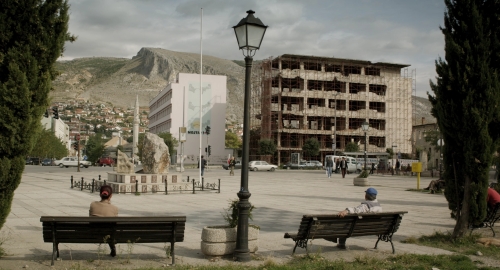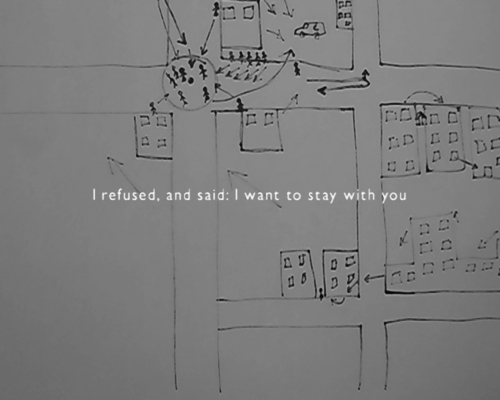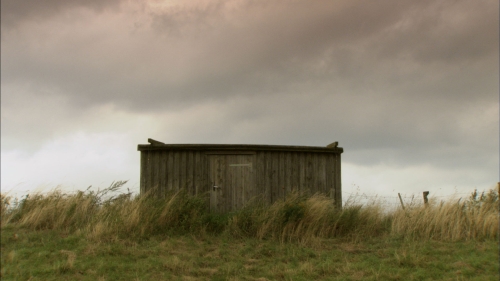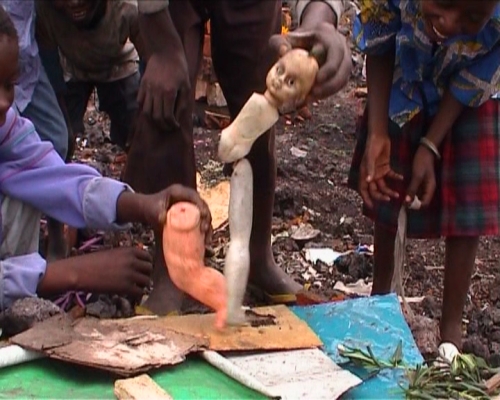“Theater of Peace – Friedensschauplätze” was an exhibition project by bankleer (Karin Kasböck und Christoph Leitner), Anke Hagemann, Dietrich Heißenbüttel and Gunda Isik at Neue Gesellschaft für bildende Kunst (NGBK) in Berlin from 1st May to 13th June, 2010, accompanied by a film program curated by Tobias Hering.
“Every day, theaters of war around the world are at the center of media attention. Working for peace on the other hand is unspectacular, protracted, and not very appealing. How can a place, an initiative, an artistic work become a theater of peace? What alternative perspectives can be used to counter asymmetrical conditions of visibility? Is it even possible to make peace visible, to represent it? The exhibition Theater of Peace brings together artistic and activist strategies that make visible the hidden stories behind the different scenes of crisis around the world, intervene in public discourse, and resist the logic of war.” (from the exhibition text)
Film program:
Was bleibt (Šta ostaje | What Remains)
Clarissa Thieme, Germany 2009, 30 min.

What Remains consists of static long shots of locations and landscapes in today’s Bosnia and Herzegovina. The ordinariness, banality, or beauty of these places stands in contrast to the fact that they were all scenes of war crimes during the Bosnian War of 1992 to 1995. Because the camera remains still and the images become extended in time, it is the gaze of the observer that is set in motion. These images are full of information but do not address anyone; one looks at them unbidden. The places stand for themselves; they do not explain themselves, but throw back the questions posed them—fundamental questions, such as what am I seeing, where should I look, how can I make sense of the elements of the image I see and the sounds that I hear?
Clarissa Thieme studied Cultural Studies and Aesthetic Practice at the University of Hildesheim and Art and Media at the Berlin University of the Arts. She is part of the Berlin artist collective WERKSTATT and, since 2008, a fellowship recipient for New Media Art from the Heinrich Böll Foundation. What Remains is a co-production of gegenfilm (Vienna) and deblokada (Sarajevo).
Videokartografien: Aida, Palästina (Videomappings: Aida, Palestine)
Till Roeskens, France / Palestine 2009, 46 min.

Each of the six stories in Videomappings: Aida, Palestine begins from nothing, with a voice and a white screen that hides the speaker from our view. While we listen to the story, an invisible hand produces a felt-tip drawing on the white surface. The drawing supports the voice and ultimately takes on the form of a map. As the film continues, the words and the drawings coalesce into testimonials of expulsion and land theft and of everyday survival in the Aida refugee camp near Bethlehem. Thanks to the complete absence of documentary images, these testimonials penetrate into the gap between our desire to see something and a disappearance that cannot be shown.
Till Roeskens was born in Freiburg and lives in Marseille. He is interested in places and territories and in the stories and behaviors of those who live or spend time there. He describes his work as an artist as the “applied geography of a lay person.” The results come in different formats: publications, videos, slide shows, photographs, and, in connection with these, storytelling. Videomappings: Aida, Palestine was awarded the Grand Prix of the French competition at the Festival International du Documentaire in Marseille in 2009.
D’Arusha à Arusha (From Arusha to Arusha)
Christophe Gargot, France / Canada / Rwanda 2008, 114 min.

From Arusha to Arusha is about Rwanda a scant fifteen years after the escalation of violence in which almost a million people, the majority of them Tutsis, were murdered in the course of a few weeks. Gargot’s film assembles several levels of images and scenes that stand for the response to the events of April 1994, surveying the post-traumatic terrain with a wariness toward the standard answers that have since become manifest there. The material includes video footage of the International Criminal Tribunal for Rwanda (ICTR) in Arusha, Tanzania. Gargot shows these recordings to his interview subjects in Rwanda, who see it for the first time during their interviews with the filmmaker about their personal memories and ways in which they are processing what happened. This exemplary confrontation allows the film to deconstruct the hermetic situation of a Tribunal that claims to be conducted “in the name of humanity.”
Christophe Gargot was born in Poitiers in 1968 and lives in Marseille. He has been working as an advisor for international projects in the field of human rights and new governance since the mid-nineteen-nineties. Gargot made his first documentary film, Hé M’Sieur, in 2003. D’Arusha à Arusha is his second film.
Der Tag des Spatzen (Day of the Sparrow)
Philip Scheffner, Germany 2010, 100 min.

Day of the Sparrow brings together ornithological observations, filmmaking, and reflections on modern forms of war in a way that is as astonishing as it is illuminating. As in his last film, The Halfmoon Files, Philip Scheffner turns the documentarian’s failure to get close to an institution—in this case the Bundeswehr—into an altogether extraordinary success. “The use of the personal also receives a shift in the film; it is never employed as an entry, a legitimization, or a means of identification but nevertheless becomes part of Merle Kröger and Philip Scheffner’s carefully crafted script. […] In the end we are confronted with vital questions of taking action and how acting is tied to seeing, seeing to understanding, understanding to closeness, and closeness to involvement—or how we relate to what disturbs our peace seemingly only from afar.” (Nicole Wolf, catalogue of the Forum of the Berlinale 2010)
Philip Scheffner was born on May 28, 1966 in Homburg an der Saar and lives in Berlin. He has been working as a documentary filmmaker and video and sound artist since 1986. Together with Merle Kröger he founded the production company pong, “a platform for film, text, sound, and everything in between.”
Silent Elections
Sarah Vanagt, Belgium 2009, 40 min.

In 2005, after the end of the civil war in the Congo and during the time of the first free elections since the country’s independence, Sarah Vanagt spent an extended period of time in Goma. The city is close to the Rwandan border, an area that has become a destination for refugees from both states. The first part of her video consists of silent footage that was filmed by three youths on the eve of the elections and on election day itself, using cameras provided by the filmmaker. In the second part we hear conversations Vanagt conducted with two men who fought as child soldiers for the Tutsi rebels in Rwanda, and later were stranded in limbo in the confusion of constantly changing front lines. While the first part leaves us alone with images whose silent euphoria is disconcerting, in the second part the personal stories of the two men are accompanied by unsteady television images and a stylized coffee table set with a seemingly endlessly smoking cigarette.
Sarah Vanagt, born in 1976, lives in Brussels. She studied History in Antwerp, Groningen, and Brighton, as well as Film at the National Film and Television School in London. Her artistic work consists of documentary films, video installations, and photography. The documentaries After Years of Walking and Begin Began Begun as well as the installations Les Mouchoirs de Kabila and Power Cut were created during her time in the Congo. Silent Elections evolved out of the latter installation.